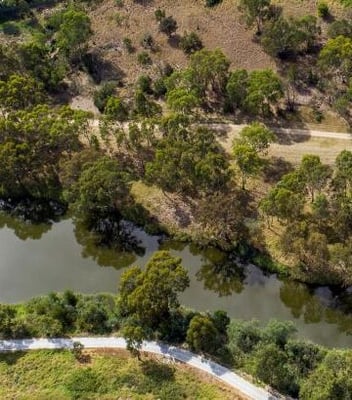A rubbish idea: GPS-tracked bottles show how litter moves through Melbourne’s waterways
From cigarette butts to plastic bottles, 95% of the litter that ends up in Melbourne’s Port Phillip Bay travels there from suburban streets.
The rubbish moves through the stormwater system into creeks and rivers, with about 350,000 butts and 600 million pieces of microplastic reaching the bay each year.
A report on the health of the Yarra River released in March this year, said litter was one of the threats putting the river system “under considerable stress”.
Now, a citizen science project from Melbourne Water and RMIT University is highlighting the problem by dropping 100 GPS-tracked plastic bottles in 20 locations across Melbourne’s catchments.
RMIT scientists will work with schools and community groups on the Litter Trackers program, which project leader Dr Kavitha Chinathamby said would help demonstrate the scale of the issue.
“Litter reduces water quality, harms fish and animals, and ruins our city’s natural beauty,” Chinathamby said.
 Melbourne Water Litter and Waterwatch Coordinator Naomi Dart, Bentleigh West Primary School student Sophie Littlefair and RMIT’s Dr Kavitha Chinathamby launching GPS-tracked bottles into Dandenong Creek. Image:
RMIT.
Melbourne Water Litter and Waterwatch Coordinator Naomi Dart, Bentleigh West Primary School student Sophie Littlefair and RMIT’s Dr Kavitha Chinathamby launching GPS-tracked bottles into Dandenong Creek. Image:
RMIT.
“To build a more sustainable and liveable future for Melbourne, we need healthy waterways – and that means we need to tackle our litter problem at the source.”
The project is the first of its kind for Victoria. It follows a 2017 initiative from the New South Wales Environment Protection Agency, which tossed 40 GPS-tracked plastic bottles into harbours, rivers and lakes across the state.
Melbourne Water Litter and Waterwatch Coordinator Naomi Dart said the program will be a learning tool for the community.
“People often don’t realise that the rubbish they drop in their suburban street ends up right here in our rivers and streams, carried by stormwater through our waterways,” Dart said.
“Melbourne Water spends millions of dollars a year removing litter from our waterways. This project is an important reminder for everyone to bin their litter.”
Find out where the bottles end up with this interactive map.

